
Region of the Americas
PAHO: Regional Appeal
Requirements (US$): 358.2 million
Context
Latin America and the Caribbean (LAC) is the world’s most economically unequal region and the second-most disaster-prone region. It is exposed annually to a wide and diverse range of hazards, emergencies and disasters of increasing scale and frequency.
The LAC Region is currently facing several complex emergencies, including the profound humanitarian consequences of the prolonged sociopolitical and economic crisis in Venezuela, growing rampant violence and social unrest in national contexts, transcontinental mass migration phenomena stemming from the Venezuelan, Haitian and Central American crisis, as well as the continued internal armed conflict in Colombia and resulting population displacements. Numerous countries in the Region are experiencing a rise in violence, crime, armed conflict, social instability and insecurity, which have become major threats to the populations of Colombia, Venezuela, Haiti, Central America, Bolivia, Mexico, Suriname and others.
The Region is at great risk for the emergence and re-emergence of pathogens with epidemic and pandemic potential, including influenza, chikungunya, Zika, yellow fever, measles, diphtheria, cholera, mpox and others. The Americas’ high vulnerability to disease outbreak is intimately linked to its diverse and changing ecosystems as well as its extremely unequal access to health services which is disproportionately affecting the most vulnerable. Coverage for routine vaccines had already fallen below optimal levels before 2020 and a further decrease in routine immunization since the beginning of the COVID-19 pandemic has set the Region back to the same coverage levels reported in 1994. The polio virus was recently found to be circulating in the United States after 28 years without cases, and 11 countries in the Region are currently at high or very high risk of experiencing an outbreak1.
The Americas are the world’s hardest-hit region by COVID-19, with 28.7% of all global COVID-19 cases and 43.4% of COVID-19 deaths as of 1 November 2022, despite accounting for only 13% of the world’s population. Two and a half years after the start of the pandemic, more than 350 000 new COVID-19 cases continue to be reported in the Americas weekly, including over 4 000 deaths. While countries struggled to cope with the COVID-19 emergency, there has been a setback of almost three decades of progress in the fight against vaccine-preventable diseases in the Region. In 2020-21, more than 2.7 million children under the age of one in the Americas did not receive all essential vaccine doses due to interruptions in health services caused by the COVID-19 pandemic.
Socioeconomic determinants also play a significant role in this disproportionate impact, given that the Americas is the region of the world with the highest levels of inequity. The number of people in need of humanitarian assistance in Latin America and the Caribbean (LAC) has nearly tripled over the last three years2 and, while response to COVID-19 in 2021 pivoted to longer-term operations, humanitarian needs are likely to keep burdening the Region for years to come. The Economic Commission for Latin America and the Caribbean (ECLAC)3 anticipated that poverty and extreme poverty rates in the Region of the Americas will continue increasing in 2022, reaching an estimated high of 33% and 14.5% respectively. The acceleration of inflation could lead to an increase of up to 1.1% in extreme poverty, compared to the previous year, putting an additional 7.8 million people at risk of food insecurity. Moreover, 86.4 million of the population are already in critical poverty conditions in the Americas.
The frequent and intense emergencies and disasters that affect the Americas every year have a strong impact on the health of populations and constitute an important challenge for Latin American and Caribbean countries to protect the health of their communities. In addition, the critical reduction in levels of routine vaccination alarm as the Region is now confronted with the risk of resurgence of vaccine-preventable diseases, many of which had been eradicated from the Americas after years of committed and collective work.
After almost three years of COVID-19 pandemic, the multiplication of acute emergency situations in an overall regional context of deteriorated socio-economic environment and reduced access to health services has highlighted the need for a comprehensive, multi-hazard approach to efficiently and effectively prioritize the prevention, preparedness, readiness, response, and recovery of health emergencies, and be able to protect the lives, health, and wellbeing of their populations.
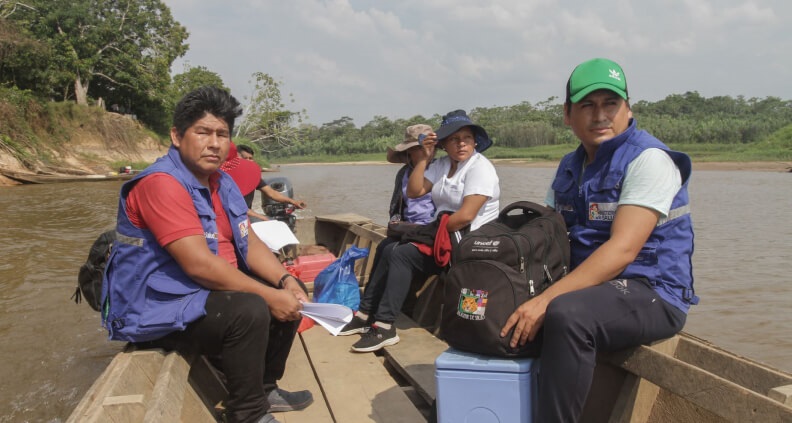
PARAGUAY, July 2022 – Mission for health surveillance and vaccination against COVID-19, influenza and routine vaccination in vulnerable communities of Caaguazú.
Regional Priorities
WHO / PAHO aims to protect and save lives across the Region and mitigate the disproportionate impact of emergencies and humanitarian crises on the health and wellbeing of local populations and societies. Regional emergency response priorities for 2023 will focus on:
- Supporting and scaling-up operational response capabilities of national authorities and health partners and strengthening humanitarian logistics networks.
- Strengthening national capacities for preparedness and readiness for health emergencies, including the development of policies and legal and normative instruments to implement IHR core capacities in countries.
- Improving sectoral and intersectoral coordination among response partners to optimize interventions and address the most acute needs of vulnerable communities.
- Building resilience and improving coping strategies at community level to protect the most vulnerable population groups.
- Supporting the expansion and strengthening of surveillance and information management systems to monitor health emergency events and disasters, prevent future outbreaks, detect threats, adapt measures, and prepare health systems.
- Strengthening laboratory capacities, and the infrastructure of the national immunization programs, including national cold chain operations, capacities to store, distribute and handle all vaccines and training national technicians.
- Providing leadership, coordination, and logistical support for the prompt mobilization of goods and human resources, including for the rapid expansion of clinical care capacity to support acute emergency responses in affected countries.
- Engaging civil society, community leaders, non-governmental organizations, the private sector, academic institutions, and other stakeholders to jointly advance and work in a coordinated manner to provide health and humanitarian assistance, especially to populations most at-risk.
- Strengthening national and cross-border capacities to respond to increased population movements across the Region, primarily focused on protecting migrants’ health, and ensuring equitable access to health services.
- Establishing and strengthening preparedness and response coordination mechanisms at regional, subregional and country level, with active participation of community, local, national, regional, and global actors to better prepare for, respond to and recover from public health and humanitarian emergencies.
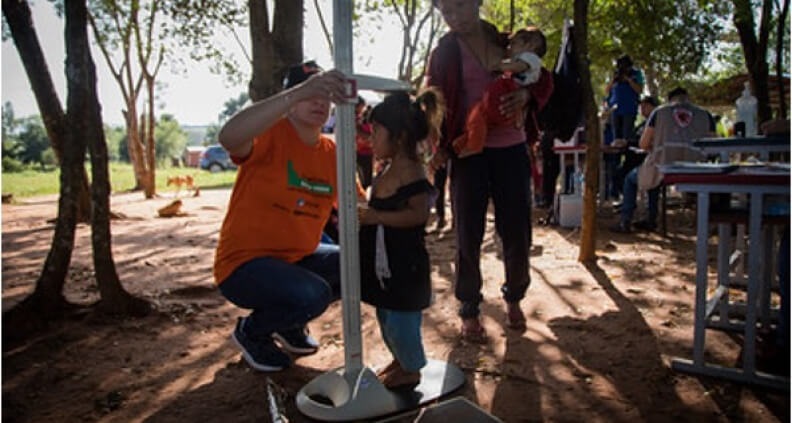
PARAGUAY, July 2022 – Mission for health surveillance and vaccination against COVID-19, influenza and routine vaccination in vulnerable communities of Caaguazú.
Focus Countries
Colombia
- People in need: 7.7 million
- People targeted: 1.6 million
- People in health need: 6 million
- Requirements (US$): 16.2 million
Colombia has been affected by a prolonged humanitarian context with recurrent multi-hazards impacting its territories, combined with serious structural and systemic challenges within the health system. These challenges have been aggravated by the COVID-19 pandemic, growing violence within the Colombian territories and along the border with Venezuela, as well as recurrent and concomitant natural disasters.
In 2022, the number of people in need of humanitarian assistance increased by 300 000 as a consequence of deteriorating indicators of maternal and child mortality, pregnancy in adolescent girls, HIV, suicides, STIs, gender-based and sexual violence, and communicable diseases. Increasing population trends, primarily as a result of mass migration, and the persistence of armed conflicts resulting in continued mobility restrictions and forced displacement create barriers to access essential health services, further impacting the health, lives and wellbeing of vulnerable populations. In many territories, geographical distance to health facilities and attacks on medical missions hinders the provision of appropriate health care.
The main priorities for humanitarian health assistance in the country for the year 2023 include strengthening national and local capacities for coordination, preparedness and response to health emergencies and scaling-up WHO’s support to health authorities and partners. Particular attention will be given to the strengthening of epidemiological surveillance, community capacity for preventive health actions and early detection of important public health events, as well as increasing access to safe water, sanitation and hygiene where it is most needed.
El Salvador
- People in need: 1.1 million
- People targeted: 496 600
- People in need of health assistance: 1 million
- Requirements (US$): 5.3 million
The recurrence of severe climate events combined with economic, social, and institutional fragilities leave El Salvador in an extremely vulnerable and critical humanitarian situation. Located in a disaster-prone subregion, El Salvador is among the 20 countries in the world at highest risk of disasters.
The country is constantly exposed to earthquakes, floods, and droughts. The successive hydrometeorological hazards that have impacted El Salvador over the past two years, including Tropical Storms Amanda and Cristóbal, and Hurricanes Eta, Iota and Julia, have profoundly affected the lives and livelihoods of almost 900 000 people. This has significantly disrupted health services, particularly at the primary care level.
According to the Humanitarian Response Plan 2021-2022, vulnerable economic conditions and income inequality were amplified by the effects of the COVID-19 pandemic, resulting in an 8% reduction in the country’s GDP and a 4.6% increase in poverty in 2022. The number of people facing food insecurity increased from 620 000 prior to the pandemic to about 1 043 661, mostly due to the economic crisis caused by COVID- 19, extreme climate events and structural challenges. Increasing homicide rates and rampant violence threaten social development and economic growth and are one of the main causes for forced internal displacement.
In this complex situation, the health sector’s main priorities include contributing to the resilience of primary health care (PHC) services in areas of high migration, increasing access to primary care services and quality of care for the vulnerable populations affected by emergencies and humanitarian crises, and strengthening risk communication and knowledge management for emergency preparedness, response, and recovery.
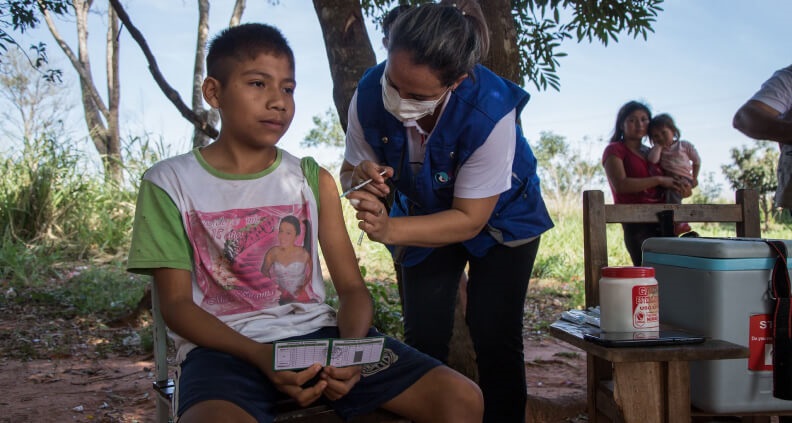
Guatemala
- People in need: 5.0 million
- People targeted: 2.3 million
- Requirements (US$): 6.3 million
Recovery from COVID-19 has been challenging in Guatemala. As a result of the prolonged socio-economic impact of the pandemic, the average poverty rate nationwide has increased by almost 5%. This rise in poverty levels is further exacerbating preexisting vulnerabilities and eroding the limited safety nets available to populations living in precarious conditions.
Almost three years into the COVID-19 response, vaccination coverage in Guatemala is still far below target, with only 38.2% of the population completing a full vaccination schedule against COVID as of 28 October 2022. This low coverage leaves a large portion of the population vulnerable to new infections and hospitalization and continues to put the Guatemalan health system and its limited resources under strain.
The UN estimates that approximately 5 million people in Guatemala are in need of humanitarian assistance, including urgent medica care. Pregnant and lactating women, children, people with disabilities and individuals settled in the areas previously affected by Hurricanes Eta and Iota are among the most vulnerable.
Priority objectives for 2023 include the strengthening and reestablishment of capacities for the provision of critical and essential services in facilities impacted by disasters and emergencies, rehabilitation works, recuperation of lost supplies and equipment, and surge in human resources capacity. In addition, efforts will focus on strengthening capacities of the health institutions and communities to anticipate and respond to health emergencies and disasters. Emphasis will be placed on strengthening primary health services and improving capacities for early detection of infectious hazards.
Haiti
- People in need: 5.2 million
- People targeted: 3 million
- Requirements (US$): 36.6 million
For several years, Haiti has been engulfed in a socioeconomic, political, and humanitarian crisis. The situation reached critical levels in mid-September 2022 following the intensification of gang violence and social unrest. This widespread insecurity, combined with political instability, has paralyzed the country resulting in drastic consequences for access to basic goods and services, including food, water and health.
The profound fuel supply crisis has affected the supply of water and electricity to the population, health centers and hospitals. Due to problems of insecurity and violence, patients and health personnel have difficulty accessing hospitals and health services. In parallel, the public health system and international partners are faced with limited response capacity due to a reduction of international personnel in Haiti, combined with logistical issues and difficulties concerning the import of supplies and access to communities in need of assistance.
Armed gangs now control over 60% of the metropolitan area of Port-au-Prince, affecting at least 1.5 million people. The national road to the south has been blocked since June 2021, cutting off around three million people in the southern peninsula. This has significantly hampered response and recovery efforts following the severe earthquake that affected southern departments in August 2021. Intensifying insecurity, roadblocks and lockdowns are also affecting importation and distribution of internationally procured goods, which slows the arrival of lifesaving essential supplies to restore health care delivery capacity in affected provinces and support cholera response efforts. This is a concerning scenario as cholera recently resurfaced in early October after three years with no confirmed new cases.
WHO’s humanitarian priorities for 2023 in Haiti will focus on saving lives and addressing immediate needs of the population in areas affected by the resurgence of cholera, as well as protecting the most vulnerable groups impacted by violence, insecurity and rising poverty levels.
Venezuela (Bolivarian Republic of)
- People in need: 7 million
- People targeted: 5.2 million
- Requirements (US$): 155.3 million
The Bolivarian Republic of Venezuela has been facing a prolonged socio-political and economic situation that has profoundly and negatively impacted the population’s health and social well-being. The humanitarian context in the country was further aggravated by the COVID-19 pandemic, which stretched the limits of an already weakened national health system.
Violence and social conflicts, hyperinflation, constant political tensions, mass migration and intensification of climate threats and natural hazards have worsened living conditions and the health status of vulnerable communities, including women, children, and indigenous populations.
In this complex humanitarian environment, WHO will focus on sustaining and strengthening operational and functional capacities of critical and essential health services in 2023. This will be achieved through a primary health care approach, to ensure local health systems are operational, safe and resilient. Efforts will also prioritize the sustained availability of essential medicines, medical equipment and supplies, capacity building and protection of health workforce, access to comprehensive, timely and quality services, water, sanitation and hygiene (WaSH) interventions, and strengthening preparedness and response capacities of health systems.
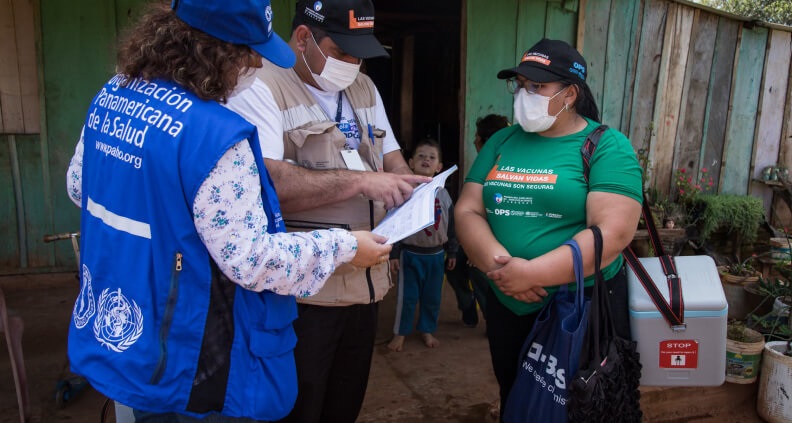
Success stories
Farther, faster: new equipment accelerates COVID-19 vaccination in the Dominican Republic
The arrival of the COVID-19 vaccine in 2021 was good news for communities in the Dominican Republic province of Elías Piña, which borders Haiti. In this tropical and mountainous remote area, 80% of households live in poverty and the majority work in agriculture. Many workers are migrants from Haiti, some of whom cross the border daily to work on the Dominican Republic side. They flee from political and economic instability in their home country, where the COVID-19 vaccination rate is among the lowest in the world - only 1.9% of the population have completed a full vaccination schedule.
To help authorities reach these communities more quickly, PAHO/WHO delivered donations of cold chain equipment to the province. The arrival in March 2022 of a horizontal refrigerator increased vaccine storage capacity and enabled deliveries to local health centers and temporary, mobile clinics, which were set up in different communities according to need. This helps keep vaccines refrigerated at the recommended temperature for several hours while health workers navigate mountainous roads on journeys that can take up to six hours.
The equipment provided means up to 30 doses could be simultaneously deployed during the first COVID-19 vaccination campaign in the province, cutting vaccine distribution time by more than half. The new cold chain assets also enable the safe delivery of vaccines to protect the population against other preventable diseases that threaten to come back in the Region, such as measles, rubella, and poliomyelitis.
Financial requirements
Overall regional funding requirements for ongoing emergency response operations (US$ ‘000)


Overall regional funding requirements for COVID-19 and other emergencies (US$ ‘000)


Overall funding requirements by pillar for COVID-19 (US$ ‘000)
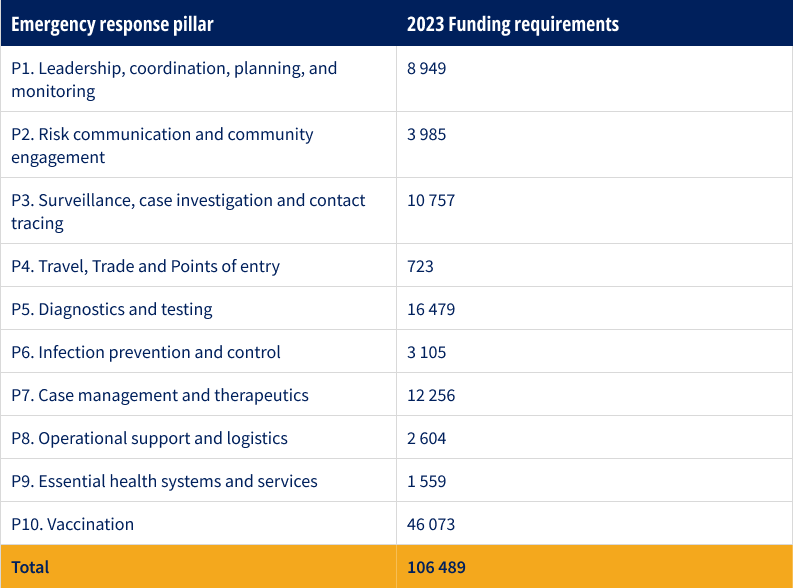

For more information
Julie Mauvernay | Resource Mobilization and Communications | WHO PAHO | mauvernj@paho.org

